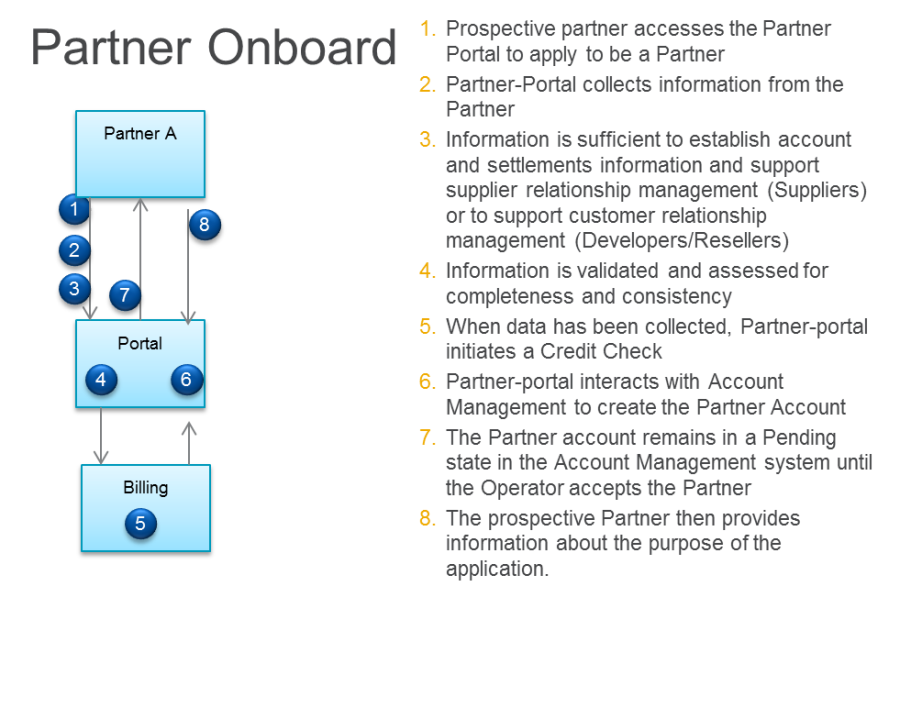Indeed, long before a product (/service) is sold to a customer or made available to a community of developers, an enterprise must establish its business model through partnerships in the value chain and /or value network. To do so, the enterprise need to on-board partners and even the smallest players must be enabled to be on-boarded by bigger ones
To begin the sharing information process, the engaged party (partner, supplier, application developer) need to onboard as partner of the ecosystem owner.
This means that a partner wanting to offer services in the Digital ecosystem needs to be registered and to sign appropriate agreements for the type of services they want to offer. Partners may be Suppliers (of services or content), Developers (of APPs), Resellers (bundling services) or Enterprises.
The intention for partner onboarding in the Digital Ecosystem is to have a lightweight approach similar to an end user signing on to terms and conditions for downloadable application.
So, in a digital ecosystem, the partner will utilize a partner portal which will allow:
- Defining the roles it will play as an engaged party
- Signing to above mentioned agreements
- Creating accounts for billing/charging or settlements related to the selected or offered services.
- Declaring on which account the agreements will apply
In addition, enterprises looking for partnership may wish to share catalog content &catalog management related business processes.
They can act as a Source of catalog information or a Client of Catalog information or both Source and Client.
- A "Source" catalog allows external access to its catalog and business processes and generally restricts or segregates its catalogs and processes for external access.
- A "Client" catalog will discover catalog information and business processes from external Source Catalogs and generally incorporates the discovered information into its own catalog and business processes to form hybrid product offers.
Catalogs can be both a Source to one company and a Client to another, or may be both Source and Client to each other in a mutual bidirectional arrangement
The following three classifications are used to describe these relationships:
- Single Direction Client Catalog - Discover catalog information from a Source Catalog, use portions of the Source company's fulfillment process.
- Single Direction Source Catalog - Share catalog information with a Client Catalog, allow the Client Catalog to access catalog information and use the Source Catalog's fulfillment, assurance, charging service management processes.
- Bidirectional Client/Source - Both companies can discover and share information by forming Client and Source relationships with each other. Each company shares and discovers catalog information and each allows the other to utilize fulfillment, assurance, charging service management processes.
The diagram below summarizes the initial high level steps of on-boarding process.
Figure 4: High level view of partner on-boarding process
In conclusion, a typical partner on-boarding use case is detailed below.
